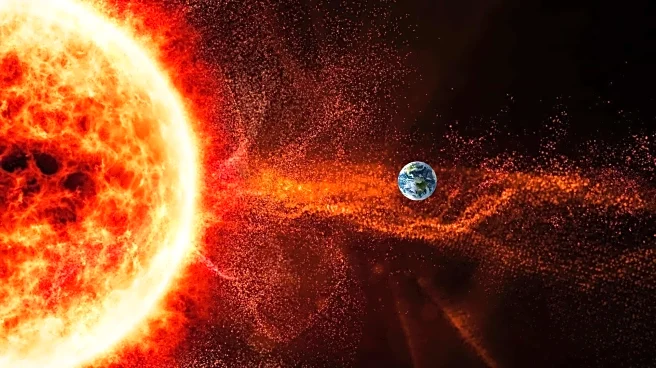What's Happening?
The sun has emitted an X5.1-class solar flare, the strongest of 2025, causing significant radio blackouts across Africa and Europe. The flare originated from sunspot AR4274, which has been highly active,
producing multiple intense flares recently. The eruption led to widespread radio signal degradation due to ionization of the upper atmosphere. NOAA's Space Weather Prediction Center forecasts potential geomagnetic storm conditions as coronal mass ejections (CMEs) from these flares are expected to impact Earth, possibly triggering auroras.
Why It's Important?
Solar flares can significantly impact communication systems, particularly high-frequency radio communications, which are crucial for aviation, maritime, and emergency services. The potential geomagnetic storms could affect power grids and satellite operations, highlighting the need for robust infrastructure to withstand such solar events. The increased solar activity also provides opportunities for scientific research and public engagement through aurora displays, emphasizing the importance of monitoring space weather for technological and societal preparedness.
What's Next?
NOAA predicts the CME associated with the recent solar flare will reach Earth on November 12, potentially causing severe geomagnetic storm conditions. Stakeholders in communication, energy, and satellite industries may need to prepare for disruptions. Continued monitoring of sunspot AR4274 is essential to anticipate further solar activity and mitigate potential impacts. Public interest in auroras may increase, offering educational opportunities about space weather phenomena.













